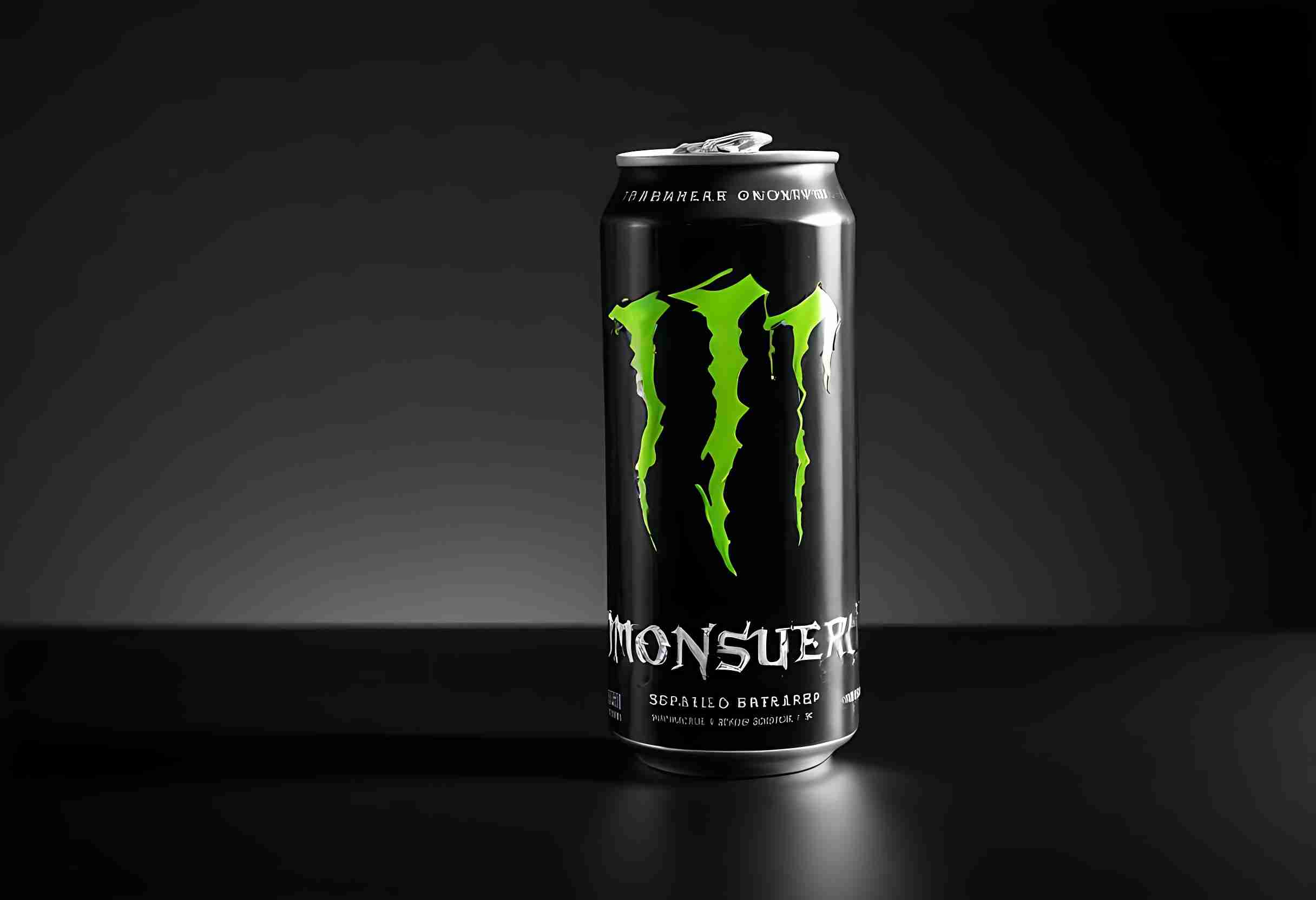Who Owns Monster Energy Drink? Find Out NOW!
Monster Energy Drink is one of the most recognizable energy drinks in the world. Known for its bold logo and high caffeine content, it has become a staple for those seeking an energy boost. But who exactly owns this iconic brand? This article explores the company behind Monster Energy Drink, its history, market presence, and much more.
Key Takeaways
- Monster Energy Drink is sold in over 100 countries and employs around 3,666 people globally.
- Coca-Cola owns approximately 19.4% of Monster, a partnership that began in 2014.
- Rodney Cyril Sacks is the current chairperson and CEO of Monster Beverage Corporation.
- The Monster Energy logo is famous worldwide and has even sparked some controversies.
- Monster Energy’s market cap is around $48.22 billion, and it trades on the Nasdaq.
The Origins of Monster Energy Drink
Monster Energy Drink has a fascinating history that dates back to its roots with Hansen Natural. The company, based in Corona, California, was originally known for its natural sodas and juices.
However, in 2002, Hansen Natural made a bold move by introducing Monster Energy Drink to the market.
This decision marked a significant shift in the company’s direction and set the stage for its future success.
The Evolution of Monster Beverage Corporation
Rebranding from Hansen Natural
Monster Beverage started as a family-oriented business in California in 1935. The company adopted the Hansen name, a reference to Hubert Hansen, who began the business with his three entrepreneurial sons.
They focused on making and selling fresh juice. As demand in the energy drink market soared, Hansen’s board saw considerable profit potential.
Therefore, they unveiled their newest product, Monster Energy Drink, in 2002. In the same period, the company changed its name to Monster Beverage Corporation. It was an excellent decision.
Growth and Expansion
Since the rebranding, Monster Beverage Corporation has seen significant growth. The Monster Energy logo stormed the beverage market nearly two decades ago.
Since then, the monstrous green and white trademark has refused to visit the design studios. The emotional connection that comes with the logo made it instantly recognizable and successful.
Because it looks classic and visually attractive, it represents the brand on all advertising mediums.
The company has surfed on these controversies to become the second-largest energy drink after Red Bull.
Who Owns Monster Energy Drink?
Monster Energy Drink is a popular beverage enjoyed worldwide, but who exactly owns it? The answer involves a mix of strategic partnerships and key individuals.
Coca-Cola’s Stake in Monster
Coca-Cola owns approximately 19.4% of Monster Energy. This partnership began in 2014 and has been beneficial for both companies. Coca-Cola’s investment has helped Monster Energy expand its reach and grow its brand.
Role of Rodney Cyril Sacks
Rodney Cyril Sacks is the chairperson and CEO of Monster Beverage Corporation. Under his leadership, the company has seen significant growth and success. Sacks has been instrumental in steering the company to its current position in the market.
Also Read: Why Are Monster Energy Drinks Bad for You
Monster Energy’s Market Presence
Global Sales and Revenue
Monster Energy has become a powerhouse in the beverage industry, thanks in large part to its innovative marketing strategy. The brand’s global sales have seen significant growth over the years.
For instance, net sales for the 2024 first quarter increased 11.8 percent to $1.90 billion, from $1.70 billion in the comparable period last year.
This impressive performance highlights the brand’s strong market presence and its ability to capture consumer interest worldwide.
Market Capitalization
Monster Energy’s market capitalization reflects its dominant position in the industry. The company’s value has steadily increased, making it a formidable player in the beverage market.
This growth is a testament to Monster Energy’s successful business strategies and its ability to adapt to changing market dynamics.
As the brand continues to expand, it is poised to maintain its leadership in the energy drink sector.
The Ingredients Behind Monster Energy
Monster Energy Drink is packed with a variety of ingredients that give it its unique kick. Caffeine and guarana are two of the primary components that provide the energy boost.
The Caffeine is well-known for its stimulating effects, while guarana, a plant native to the Amazon, contains natural caffeine.
Caffeine and Guarana
Another key ingredient is ginseng root, which is believed to help with energy and focus. Monster Energy also includes L-carnitine, an amino acid that plays a role in energy production. These ingredients work together to give you that extra push when you need it most.
Ginseng Root and L-Carnitine
In addition to these, the drink contains taurine, a type of amino acid that supports neurological development and helps regulate water and mineral levels in the blood.
The label of Monster Energy boasts of a mix of other ingredients like carbonated water, sugar, glucose, citric acid, and natural flavors.
This combination not only enhances the taste but also contributes to the overall energy-boosting effect of the drink.
The Iconic Monster Energy Logo
The Monster Energy logo is one of the most recognizable symbols in the beverage industry. Featuring bold green claw marks on a black background, it instantly grabs attention and evokes a sense of power and energy.
The visually striking logo has played a significant role in the brand’s popularity, making it a favorite among consumers.
Design Elements
The logo’s design is simple yet effective. The green claw marks are unique and memorable, setting Monster Energy apart from other brands.
The black background adds a touch of mystery and sophistication, making the logo stand out even more.
This combination of elements has made the logo a symbol of extreme sports and adventure.
Controversies and Popularity
The Monster Energy logo has not been without its controversies. Some religious groups have criticized the logo, claiming it has hidden meanings. However, these controversies have only added to the logo’s mystique and popularity.
Today, the logo continues to enjoy massive popularity across the world, contributing to Monster Energy’s status as the second-largest energy drink brand after Red Bull.
Monster Energy’s Marketing Strategy
Monster Energy doesn’t just sell drinks; it ignites a revolution. Their marketing strategies aren’t mere campaigns; they’re full-throttle assaults on your senses.
Monster Energy’s innovative marketing strategy has been instrumental in establishing the brand as a dominant force in the market.
From leveraging extreme sports and high-profile sponsorships to harnessing the power of social media and adopting guerrilla marketing techniques, Monster Energy has consistently pushed the boundaries and stayed ahead of its competitors.
As the brand continues to evolve, adapt, and embrace changing consumer trends, it is poised to remain a leader in the beverage industry.
Monster Energy in Sports and Lifestyle
Monster Energy is more than just a drink; it’s a way of life. The brand is deeply embedded in various sports and lifestyle activities, making it a favorite among athletes and fans alike.
Monster Energy’s innovative marketing strategy has helped it become a dominant force in the market. From extreme sports to high-profile sponsorships, the brand consistently pushes boundaries.
Motorsports Involvement
Monster Energy is heavily involved in motorsports, sponsoring events and athletes in motocross, off-road racing, and NASCAR.
This involvement not only supports the athletes but also creates a strong visual association with the excitement and energy of these sports.
Extreme Sports Sponsorships
The brand is also a major player in extreme sports like BMX, skateboarding, and snowboarding.
By sponsoring top athletes in these fields, Monster Energy becomes a part of their journey, reinforcing its identity as a brand that believes in authenticity and the core of what these sports represent.
Whether it’s motorsports or the rock and roll lifestyle, Monster Energy is a brand that believes in authenticity and the core of what its sports, athletes, and musicians represent. More than a drink, it’s the way of life lived by athletes, bands, believers, and fans.
The Future of Monster Energy Drink
Upcoming Products
Monster Energy is always looking to innovate and bring new products to the market. They are exploring new flavors and healthier options to meet changing consumer preferences. Expect to see more low-sugar and natural ingredient options soon.
Market Trends and Predictions
The energy drink market is growing, and Monster Energy is poised to take advantage. They are keeping an eye on trends like the rise of functional beverages and the demand for sustainable packaging.
With their strong brand and innovative approach, Monster Energy is set to remain a key player in the industry.
The Impact of Monster Energy on the Beverage Industry
Competition with Red Bull
Monster Energy has become a powerhouse in the beverage industry, thanks in large part to its innovative marketing strategy.
This strategy encompasses various elements that have helped the brand establish a strong presence and capture the attention of consumers worldwide.
Monster Energy’s innovative marketing strategy has been instrumental in establishing the brand as a dominant force in the market.
From leveraging extreme sports and high-profile sponsorships to harnessing the power of social media and adopting guerrilla marketing techniques, Monster Energy has consistently pushed the boundaries and stayed ahead of its competitors.
Influence on Market Dynamics
Monster Energy’s sponsorship efforts in music festivals and events, as well as its partnerships with high-profile athletes, have proven to be highly effective in expanding its reach and connecting with consumers.
By aligning itself with the energy and excitement of live performances and showcasing its support for athleticism, Monster Energy has successfully positioned itself as a brand that embodies passion, determination, and a thirst for life.
Conclusion
Monster Energy has grown from a small brand to a global powerhouse, thanks to its unique marketing strategies and strong partnerships.
With Coca-Cola owning a significant share, the company has expanded its reach to over 100 countries.
The iconic logo and the brand’s association with extreme sports have made it a favorite among energy drink consumers.
As Monster Energy continues to innovate and grow, it remains a key player in the beverage industry, showing no signs of slowing down.
Frequently Asked Questions
Who owns Monster Energy Drink?
Monster Energy Drink is owned by Monster Beverage Corporation. Coca-Cola also owns about 19.4% of the company.
What is Monster Energy Drink?
Monster Energy Drink is a popular energy drink known for its high caffeine content and unique blend of ingredients like guarana, ginseng root, and L-carnitine.
How did Monster Energy Drink start?
Monster Energy Drink was introduced by Hansen Natural in 2002. The company later rebranded to Monster Beverage Corporation.
What is the market value of Monster Energy?
As of now, Monster Energy has a market capitalization of around $48.22 billion and is traded on the Nasdaq.
How much revenue does Monster Energy generate?
In the 2020 fiscal year, Monster Energy had global net sales of $4.6 billion.
What is the Monster Energy logo?
The Monster Energy logo features a neon green ‘M’ that looks like it was clawed by a beast, set against a black background.
How does Monster Energy market its products?
Monster Energy uses various marketing strategies, including sponsorships, endorsements, and guerrilla marketing tactics.
What sports does Monster Energy sponsor?
Monster Energy sponsors a variety of sports, including motorsports, extreme sports, and events like motocross and BMX.



